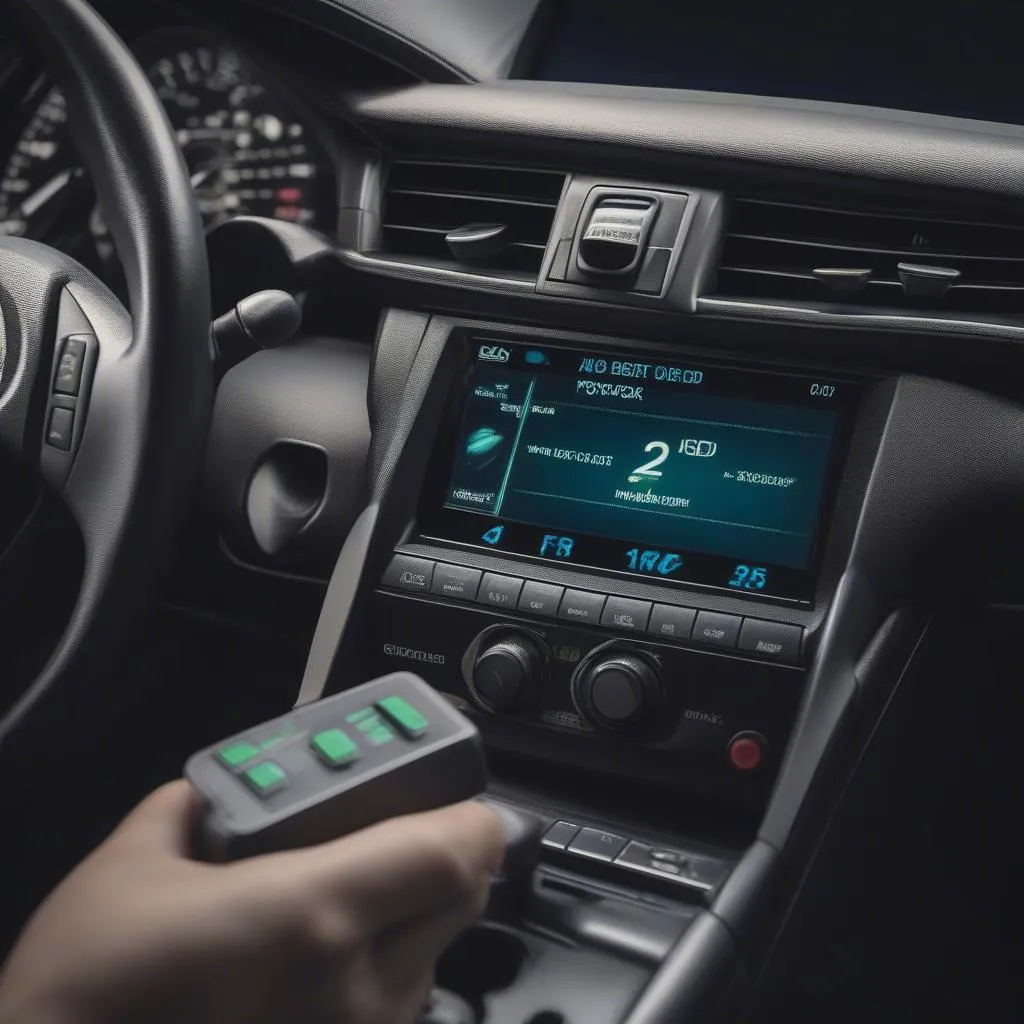Seeing a red brake warning light illuminate on your Audi’s dashboard can be a nerve-wracking experience. This crucial warning light is your car’s way of signaling a serious issue with the braking system that requires immediate attention. Ignoring it could lead to brake failure and potentially dangerous situations. This article will guide you through the common causes of a red brake warning light in Audis and provide insights on troubleshooting and resolving the issue.
Understanding Your Audi’s Brake Warning System
Before delving into the specifics, it’s important to understand the difference between the two main brake warning lights on your Audi dashboard:
- Red Brake Warning Light: This light signals a critical problem within your braking system. It could indicate low brake fluid, a malfunctioning ABS system, or a serious issue with the hydraulics. Do not drive your Audi if this light is on.
- Yellow Brake Warning Light: This light usually indicates wear and tear, most commonly worn brake pads. While not as immediately critical as the red light, it still requires prompt attention to prevent further damage and ensure safe braking performance.
Common Causes of a Red Brake Warning Light in Audis
Several factors can trigger the red brake warning light in your Audi. Here are some of the most common culprits:
- Low Brake Fluid: This is the most frequent cause. Brake fluid is essential for transmitting force from the brake pedal to the wheels, and a leak or low fluid level can significantly compromise braking ability.
- Worn Brake Pads: While typically associated with the yellow brake warning light, excessively worn brake pads can also trigger the red warning light, especially if they are worn down to the metal backing plates.
- Faulty Brake Light Switch: The brake light switch activates your brake lights when you press the pedal. A malfunctioning switch can disrupt the braking system’s electrical circuit, potentially causing the warning light to come on.
- ABS System Malfunction: The Anti-lock Braking System (ABS) is a safety feature that prevents wheels from locking up during hard braking. A fault in the ABS system, such as a faulty sensor or control module, can trigger the warning light.
- Master Cylinder Issues: The master cylinder plays a vital role in distributing brake fluid pressure to the wheels. A leak or internal failure in the master cylinder can severely affect braking performance and trigger the warning light.
- Hydraulic System Problems: Leaks or air in the brake lines or other components of the hydraulic system can also lead to a loss of brake pressure and illuminate the warning light.
Troubleshooting the Red Brake Warning Light
Warning: Do not attempt to drive your Audi if the red brake warning light is illuminated. Doing so could lead to a complete loss of braking power, putting you and others at risk.
Here’s a step-by-step guide to help you troubleshoot the problem:
-
Check the Brake Fluid Level: Park your Audi on a level surface and turn off the engine. Locate the brake fluid reservoir (refer to your owner’s manual if unsure). Carefully remove the cap and check the fluid level. If it’s below the minimum mark, add the correct type of brake fluid (DOT 3 or DOT 4, as specified in your owner’s manual).
-
Inspect for Leaks: Carefully examine the area around the master cylinder, brake lines, and calipers for any signs of leaks. Look for wet spots, drips, or puddles of brake fluid.
-
Check the Brake Pedal Feel: If the brake pedal feels spongy or goes all the way to the floor, it could indicate a serious issue with the hydraulic system, a leak, or air in the lines.
-
Listen for Unusual Noises: Pay attention to any unusual noises coming from the brakes, such as grinding, squealing, or clicking. These sounds can indicate worn brake pads or other mechanical issues.
“When dealing with brakes, it’s crucial to prioritize safety,” says automotive engineer and brake systems expert Dr. Emily Carter. “If you’re unsure about any aspect of the troubleshooting process, it’s always best to err on the side of caution and consult a qualified Audi technician.”
When to Seek Professional Help
If you’ve checked the brake fluid level and inspected for obvious leaks but the red brake warning light persists, it’s imperative to seek professional help immediately. Continuing to drive with a potentially serious brake problem is extremely risky.
audi a4 b7 red brake warning light
A qualified Audi technician has the expertise, specialized tools, and diagnostic equipment to accurately diagnose and repair the issue.
 Mechanic Inspecting Audi Brakes
Mechanic Inspecting Audi Brakes
Preventing Future Brake Warning Lights
Regular maintenance is key to preventing brake issues and ensuring your Audi’s braking system remains in optimal condition. Here are some preventative measures:
- Adhere to Scheduled Brake Inspections: Follow the manufacturer’s recommended maintenance schedule for brake inspections and fluid flushes. Regular inspections allow mechanics to identify and address minor issues before they escalate.
- Address Warning Lights Promptly: Never ignore any warning lights on your dashboard, especially those related to your brakes. Addressing issues promptly can prevent further damage and costly repairs.
- Practice Smooth Braking: Avoid harsh braking whenever possible. Gradual braking reduces wear and tear on the entire braking system.
- Choose Quality Brake Components: When it’s time for brake pad replacements or other repairs, opt for high-quality parts from reputable brands.
Conclusion
The red brake warning light in your Audi is a critical safety indicator that should never be ignored. While a simple issue like low brake fluid might be the cause, it’s crucial to understand that this warning light signals a potential problem within the braking system. Attempting to diagnose and repair brake issues yourself can be dangerous if you lack the necessary expertise. If you encounter a red brake warning light, prioritize safety by seeking immediate assistance from a qualified Audi technician to ensure your car’s braking system is restored to optimal working order.

